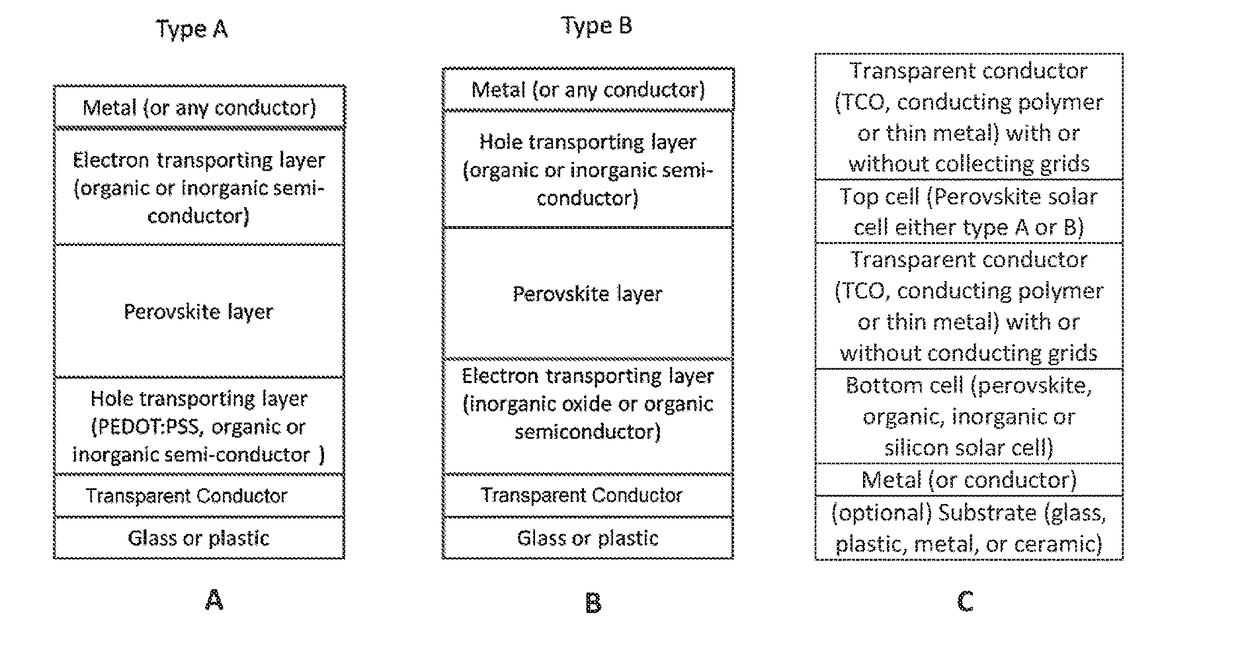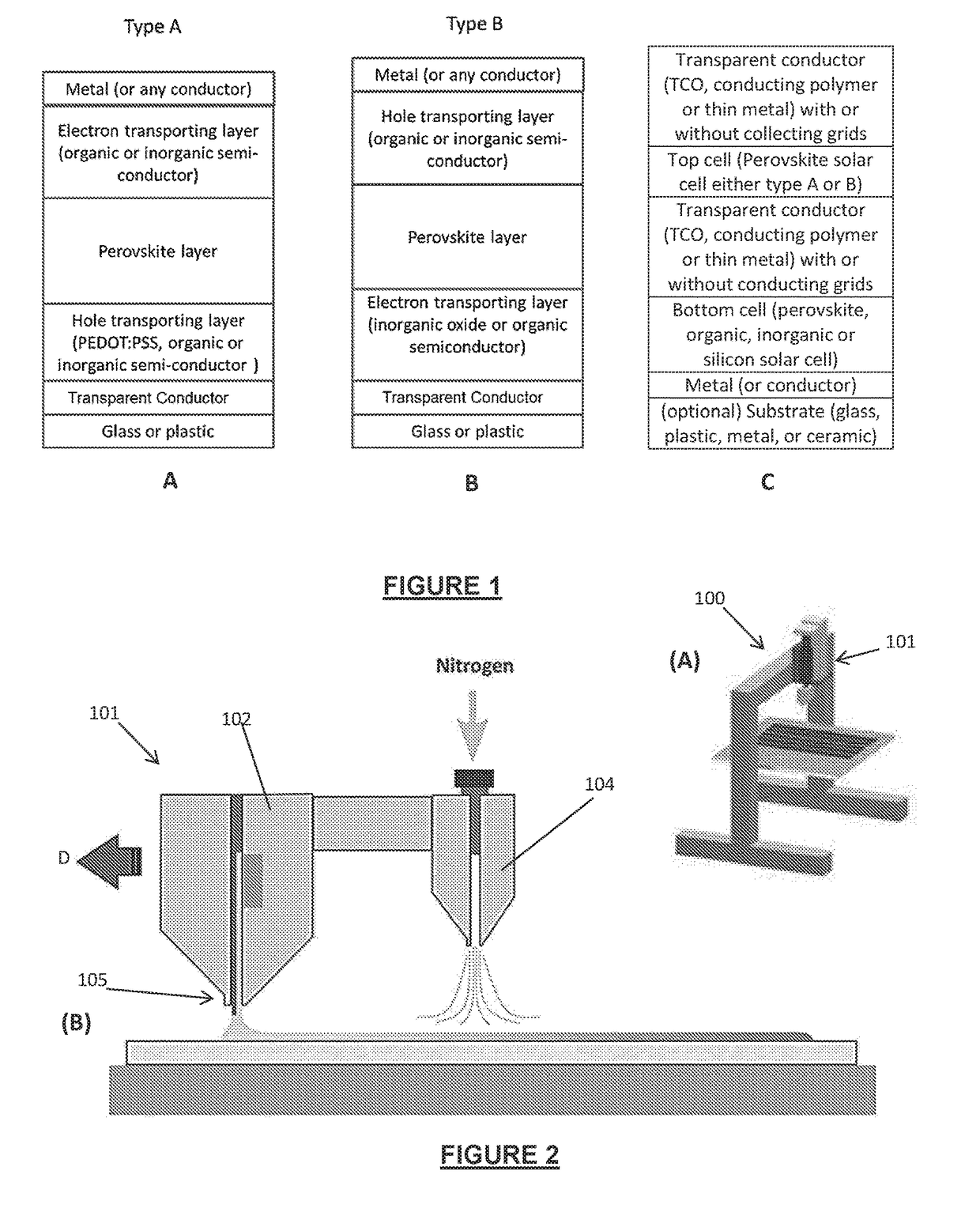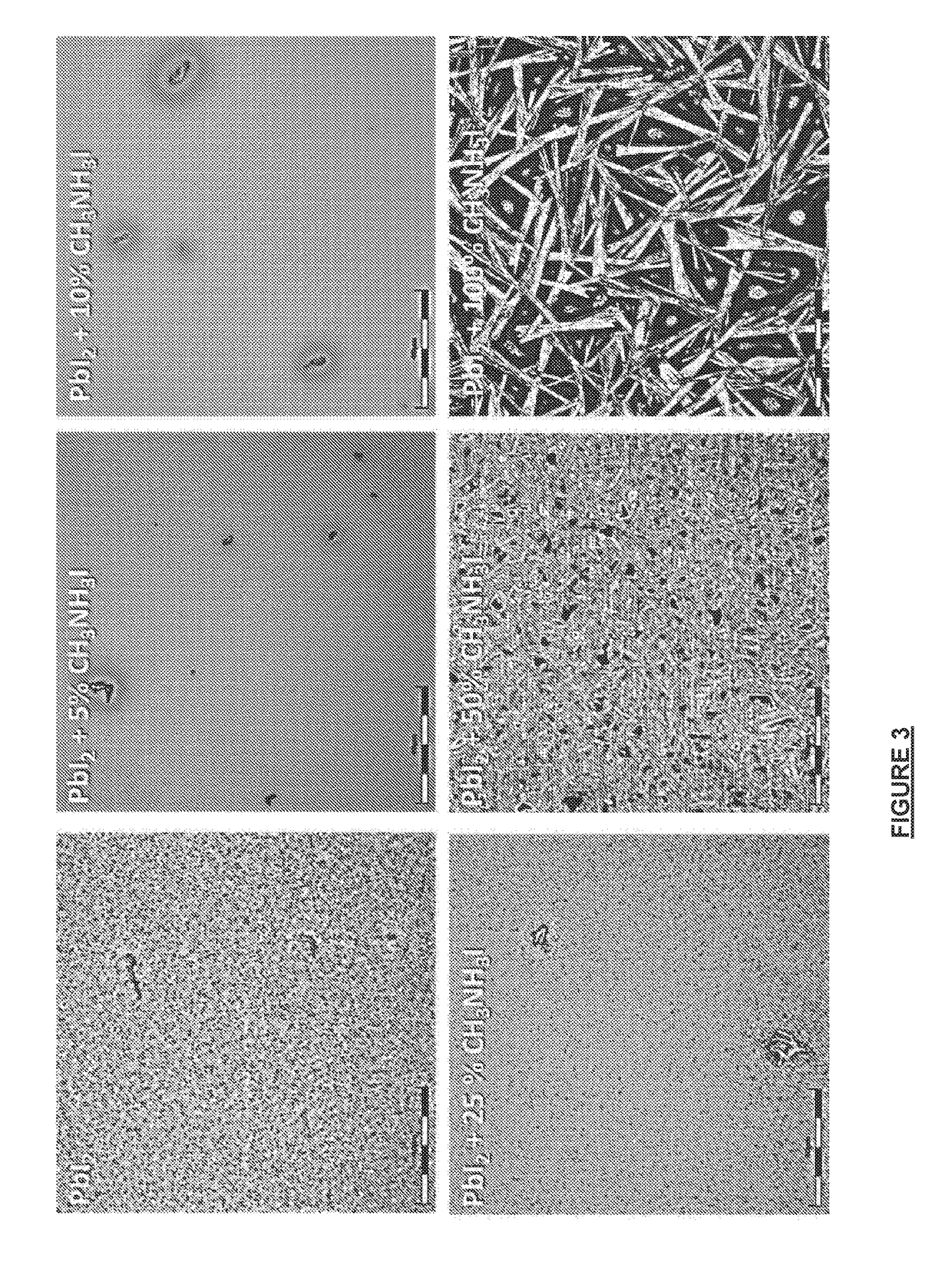Process of forming a photoactive layer of a perovskite photoactive device
a technology of photoactive device and perovskite, which is applied in the manufacture of electrolytic capacitors, light-sensitive devices, electrolytic capacitors, etc., can solve the problems of difficult formation of continuous film on a substrate, inability to use spin coating on a larger scale, and film is susceptible to dewetting, so as to improve the processability of photoactive layer and facilitate the removal of polymer. , the effect of effective retardation
- Summary
- Abstract
- Description
- Claims
- Application Information
AI Technical Summary
Benefits of technology
Problems solved by technology
Method used
Image
Examples
example 2
e Formation Reaction Speed
Photoactive Layer Fabrication:
[0171]The perovskite photoactive layers were fabricated using a similar methodology as set out in Example 1. However, here the range of different PbI2 solution compositions were applied with and without an AX(CH3NH3I) additive, comprises (A) PbI2 solution (no CH3NH3I); (B) PbI2 with 30% CH3NH3I.
[0172]CH3NH3I solution (10 mg / mL) in 2-propanol was prepared for perovskite conversion. The PbI2 layers were dipped into the CH3NH3I solution for 3 min, rinsed with 2-propanol before the film dried, and then the solvent was quickly removed by N2 gas-blowing. The reaction speed of PbI2 films without and with 30 mol % CH3NH3I were tested by timing the formation of perovskite layer formation by monitoring absorbance change during conversion. A white LED was illuminated to a beaker with CH3NH3I solution and light transmission through the beaker was monitored by a photodiode. PbI2 films with and without an AX(CH3NH3I) additive were dipped to ...
example 3
Coated Perovskite Solar Cell Devices
Photoactive Layer Fabrication:
[0174]The perovskite photoactive layers were fabricated using a similar methodology as set out in Example 1. However, in this run the PbI2 layers were fabricated by slot die coating with gas quenching as described in relation to FIG. 2 above and taught in Hwang et al, Toward Large Scale Roll-to-Roll Production of Fully Printed Perovskite Solar Cells DOI: 10.1002 / adma.201404598 again, the contents of which are to be understood to be incorporated into this specification by this reference. Furthermore, in this experimental run, the PbI2 layer were formed using four different techniques:[0175]A). Slot die coated PbI2 layer without CH3NH3I, air dried for 10 minutes;[0176]B). Slot die coated PbI2 layer without CH3NH3I, stored in a small chamber for solvent vapour soaking for 10 minutes;[0177]C). Slot die coated PbI2 layer with CH3NH3I, air dried for 10 minutes; and[0178]D). Slot die coated PbI2 layer with CH3NH3I, stored in...
example 5
Coated Perovskite Solar Cells with Extra Additive
Photoactive Layer Fabrication:
[0186]The perovskite photoactive layers were fabricated using a similar methodology as set out in Example 1. However, here extra polymer additive was added to PbI2 with 40 mol % CH3NH3I to improve processability further as described above and also in the Applicants pending international patent application No. PCT / AU2015 / 000100, published as WO2015127494A1, the contents of which are incorporated into this specification by this reference.
[0187]5 mg of polyvinlyacetate was added to 1 ml of 0.7 M PbI2 with 40 mol % CH3NH3I as a crystallization retardant. For these experiments a 200 μm gap between a meniscus guide and the substrate was used to maximize the wet film thickness. Coating was carried out at speed of 5 mm / s with 1 μL / cm2 solution feed with gas quenching as described in relation to FIG. 2 above and as taught in Hwang et al (see Example 1). Films were kept in open environment, i.e. no soaking process ...
PUM
 Login to View More
Login to View More Abstract
Description
Claims
Application Information
 Login to View More
Login to View More - R&D
- Intellectual Property
- Life Sciences
- Materials
- Tech Scout
- Unparalleled Data Quality
- Higher Quality Content
- 60% Fewer Hallucinations
Browse by: Latest US Patents, China's latest patents, Technical Efficacy Thesaurus, Application Domain, Technology Topic, Popular Technical Reports.
© 2025 PatSnap. All rights reserved.Legal|Privacy policy|Modern Slavery Act Transparency Statement|Sitemap|About US| Contact US: help@patsnap.com



